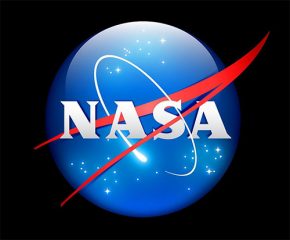So, it turns out that the “Men in Black” job is a real one and it pays about anywhere from $124,000 to $187,000. I’m not pulling your leg, NASA’s Planetary Protection Office has an opening and is looking to hire.
NASA Looking For Someone To Protect Us From Aliens (and vice versa)
Now’s your chance to be the Guardian of our galaxy. For reals. But what the heck is The Office of Planetary Protection?
The History
The NASA Office of Planetary Protection has been around since the late 1950s when concerns regarding lunar and planetary contamination were raised at the International Astronautical Federation VIIth Congress in Rome. An October 1958 report issued by a sub-committee of the International Council of Scientific Unions (ICSU) describes the first code-of-conduct for planetary protection and recommended that the newly formed Committee on Space Research (COSPAR) should resume responsibility for matters of planetary protection.
The Job Offer

At the moment, NASA is looking to fulfill the role of The Planetary Protection Officer (PPO). The fulltime job, which is open to U.S. citizens and U.S. nationals only, pays between $124,406 to $187,000 per year. (official job listing)
NASA Planetary Protection Officer Cassie Conley explains the need to keep other planets free from Earth biology and how NASA fulfills this commitment:

To quote from NASA’s Policy on Planetary Protection Requirements for Human Extraterrestrial Missions:
“Even before Neil Armstrong’s boot first touched the Moon, NASA has been concerned with the protection of Earth and its inhabitants from extraterrestrial life forms returned from inbound spacecraft. In order to protect against possible disease or other health issues incurred upon Earth’s inhabitants, procedures were created to prevent such back contamination. Each of the early Apollo astronauts endured 21 days of quarantine upon their return to Earth, as determined by the Interagency Committee on Back-Contamination based on the fact that most terrestrial disease agents were capable of invading a host and causing evident disease symptoms within 21 days after exposure of the host. In addition to protecting against back-contamination, NASA is also dedicated to the preservation of any native extraterrestrial life forms and maintaining the scientific purity of the celestial bodies to which NASA travels. Contamination by biological material from Earth could make it impossible to determine if life was present before humans visited.
Since the end of the Apollo era, robotic missions have served as humankind’s emissary to other solar system bodies, including the Sun, planets and small solar system objects. As an example, launched November 2011, the Mars Science Laboratory’s (MSL) Curiosity rover was designed to assess whether Mars ever had a habitable environment, able to support small life forms called microbes. Planetary protection requirements called for the entire MSL flight system to launch with no more than 500,000 bacterial spores. This was accomplished mainly through the careful maintenance of clean room protocols, periodic cleaning of spacecraft surfaces with alcohol wipes, and dry heat treatment of some spacecraft parts.
Space exploration is now conducted by the space agencies of nations around the globe. The International Council for Science, a nongovernmental organization, established the Committee on Space Research (COSPAR) in 1958 as an interdisciplinary scientific body concerned with the progress on an international scale of all kinds of scientific investigations carried out with space vehicles, rockets and balloons.
NASA’s Office of Planetary Protection (video):

The Treaty on Principles Governing the Activities of States in the Exploration and Use of Outer Space, including the Moon and Other Celestial Bodies, which established the basic legal framework of international space law, entered into force in 1967. Article IX of this treaty provides in relevant part,that:
“States Parties to the Treaty shall pursue studies of outer space, …, and conduct exploration of them so as to avoid their harmful contamination [“forward contamination”] and also adverse changes in the environment of the Earth resulting from the introduction of extraterrestrial matter [“back contamination”] and, where necessary, shall adopt appropriate measures for this purpose.” (read the rest
The Mission of The Office of Planetary Protection
The mission of the Office of Planetary Protection is to promote the responsible exploration of the solar system by implementing and developing efforts that protect the science, explored environments, and Earth. The objectives of planetary protection are several-fold and include:
• Preserving our ability to study other worlds as they exist in their natural states;
• Avoiding the biological contamination of explored environments that may obscure our ability to find life elsewhere – if it exists; and
• To ensure that we take prudent precautions to protect Earth’s biosphere in case life does exist elsewhere.
• To accomplish these goals, the Office of Planetary Protection is involved in many facets of mission development that include assistance in the construction of sterile (or low biological burden) spacecraft, the development of flight plans that protect planetary bodies of interest, the development of plans to protect the Earth from returned extraterrestrial samples, and the formulation and application of space policy as it applies to planetary protection.
It is the aim of Office of Planetary Protection to work in conjunction with solar system mission planners in order to ensure compliance with NASA policy and international agreements. Ultimately, the objective of planetary protection is to support the scientific study of chemical evolution and the origins of life in the solar system.
The strategy for communication of the Office of Planetary Protection is an integral element of program planning and activities; this communication strategy is summarized in the Precis to the Communication Strategy and detailed in the Full Communication Strategy. Accordingly, the Office of Planetary Protection offers several resources for the general public, mission planners, practitioners of planetary protection, and researchers in planetary protection. These resources are provided on the varying pages of this site, and include a course in planetary protection, an overview of planetary protection, references that detail developments and research in planetary protection, historical perspectives of planetary protection, and more.
Learn How with NASA’s Planetary Protection Course
NASA actually offers a course on Planetary Protection should you wish to become a PPO in the future, but it’s very limited. The weekend course takes place in November of this year. Read below for details.
Planetary Protection: Policies and Practices
Course Dates: November 14-16, 2017
Registration and Additional Information: Email the Course Manager Amy Baker
Registration is limited to 14 students on a first come – first served basis
Location: Space Station Processing Facility, Kennedy Space Center, FL 32899
Contact: Email: Course Manager: Amy Baker
List of Course Topics
• Relevant treaties, regulations and policies;
• The biology of microflora, including extremophiles;
• Laboratory techniques and practices;
• Planning for compliance;
• Guidelines for hardware design; and
• Data analysis and reporting.
About the Course
This course is offered by the NASA Planetary Protection Office and focuses on familiarizing current and future planetary protection practitioners with NASA and COSPAR policies and practices. The course is held annually at Kennedy Space Center in the United States, and once a year in Europe. This course provides a comprehensive review of all applicable policies, practices, and procedures required to implement a successful planetary protection program, and emphasizes an integration of managerial, administrative, and laboratory activities.
This course is designed for managers, engineers, designers, lab technicians, and others interested in the theory and application of planetary protection principles. Participants will learn how personnel with diverse skill sets and responsibilities are coordinated to implement successful and compliant programs. The course also provides hands-on training in microbial sampling and data management. The planetary protection course is taught by experts in the field with years of practical experience in all aspects of planetary protection, and is supported by the NASA Planetary Protection Office.

all information, documents and videos are courtesy of NASA and The Planetary Protection Office
